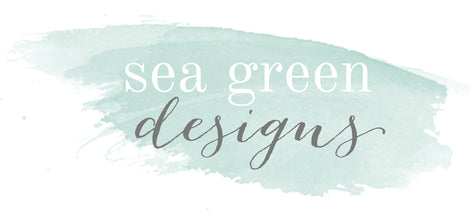How to Create Cozy with Coastal Cottage Style
Here is post number 4 in my series on the different types of coastal interiors. I think the coastal cottage style may become more popular again with the COVID-19 pandemic wreaking havoc on our lives. The reason I'm thinking this is the inherent coziness that is part of coastal cottage style. I’m not sure exactly how you are feeling these days, but all the uncertainty this pandemic is causing makes me a little anxious, and I want to feel calm and comfortable. Coastal cottage style provides the both the feeling of calm and comfortable, and today I’m sharing how you can create that in your home.




Step 1: Choose your palette
When I'm designing homes, I typically start with an overall palette. I don't mean I pick paint colors and match everything to them. I start with a general idea of the colors and find fabrics and finishes with those colors. Then, I choose my paint colors to get the right tone to work with the materials. You can bring in brighter pops of color or stay with a neutral palette of natural tones and soft pastels. Coastal cottage style is more laid back and allows for use of color whether bright or pastel. I'm using the photo from Gat Creek below to show a typical coastal cottage palette with painted furnishings and different shades of blue. Gat Creek is one of my favorite sustainable case goods manufacturers, and they capture the coastal cottage look beautifully below.
Step 2: Choose comfortable furnishings
If a relaxed atmosphere is what you're looking for in your home, coastal cottage style is for you. This style is one of the most relaxed styles in interior design. Coastal cottage style has been associated with big rolled arm, slipcovered sofas. Today you don't need big rolled arms on your sofa, but you still want to choose comfortable sofas and chairs. Lay your room out in a way that allows people to gather. Below is a living room I designed in East Hampton a few years ago that reflects this.
Step 3: Add texture
In coastal cottage style there is a lot of texture which is why it’s so charming. Add textures to your interior design by using beadboard in furnishings (like the mirror above the fireplace in the photo above) and on walls. Another way you can add texture is with painted furnishings in distressed finishes, washed and/ or reclaimed wood, and other natural materials like wicker and seagrass.Step 4: Mix patterns in a unified way
If you read my first post in this series and think you lean toward a traditional coastal style, but want a more relaxed look, coastal cottage is for you. You can create a coastal cottage look that feels more traditional by choosing patterns like florals and plaids. If you want a coastal cottage look that feels more current, go with geometric patterns. Stripes work in the coastal cottage style across the board. Mix patterns by having the same color scheme, but patterns of a different scale in size. Think wide stripes and narrow stripes in the same color. Or, you can unify the patterns by doing the same pattern, but in different colors for a more colorful, coastal cottage look.
Step 5: Add accessories
In modern and transitional coastal interiors, accessories are typically kept to a minimum. However, if you want a coastal cottage look, accessories are one way to get that cozy, comfortable feeling. Display your prized possessions or vintage finds. In coastal cottage style accessories often include wicker baskets, mason jars filled with sea glass or seashells, and maybe some nautical or floral accents.








